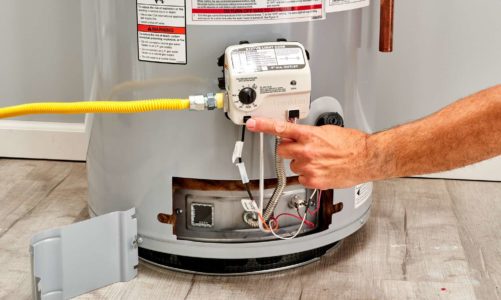While on patrol, every officer carries certain tools. Typically, these are provided by the agency for which the officer works. However, there may be things you overlook as you head out for your first patrol, or you may want to tweak your patrol tools if permitted.
Tactical gear from CAT Outdoors may provide you with better organization and options while on patrol.
Consider the tools you carry with you on a daily basis and whether you need to add them to that list. Options you may not have considered may help your patrol run more smoothly or simply ensure you are prepared for anything that may occur during your shift.
Tools Every Officer on Duty Should Have
- Your agency will provide you with a uniform.
- Make sure your service weapon is clean and loaded. You should have access to extra ammunition.
- Comfortable Shoes – Depending on your responsibilities, you may spend the majority of the day on your feet.
- Body Armor is required for all officers. Make sure you’re at ease in your armor.
Any issues should be resolved prior to your first shift.
- Your department may not always provide a flashlight. You should choose a flashlight that is simple to carry and operate.
- A nightstick, knife, and/or pepper spray may be used as additional weapons.
- Shotgun – typically provided by the agency with which you work. You should have ammunition for this weapon as well.
- Water – dehydration can sap your energy and cause you to lose focus.
- Handcuffs in excess
- Unfortunately, things happen in the medical field. In the event of an emergency, especially if you have a medical condition, you will need this information.
- Change your uniform/toiletries because you never know when you’ll be stuck somewhere. Be prepared to change your clothes or simply freshen up.
- Forms and pens are required because you never know when you will need them. It’s a good idea to have several pens on hand because they always seem to disappear.
Good Tools to Have on Hand
- Camera with a hand sanitizer – yes, you can take pictures with your phone, but your entire phone may become evidence. It’s a good idea to bring a camera just in case.
- Plastic bags can be used for a variety of purposes. Suspects’ possessions, trash, and filthy clothes. Keep a few on hand, just in case.
- You probably have a first-aid kit for your vehicle, but what about one for yourself?
- You may require eye drops, muscle/joint pain relievers, or headache medication. Shifts can be long, and if you’re not feeling well, you won’t be able to perform well.
- You never know when you’ll need to take notes, so keep a clipboard and paper handy. Most officers wear notebooks on their uniforms, but you may need more at times. Be prepared to document everything you come across.
As you can see, much more equipment is required than you might think. These are just a few suggestions for your list. Each patrol, like each agency, is distinct. These items may never be needed, but being prepared is half the battle.
Protection Against Firearms
Gun safety includes the proper handling, storage, and use of weapons. Regularly implementing safe gun handling procedures can help reduce the number of accidents and injuries caused by the use of firearms. Pull the trigger only when you are certain you are ready to fire the weapon. Always keep your muzzle pointed in a safe direction. Following these four principles is the simplest way to keep your firearms secure. Keep one eye on what’s going on in the distance.
When working with a pistol, make sure the muzzle is pointing in a safe direction. To accomplish this, you must never, ever point the gun at an object at which you do not intend to fire it. It’s also a good idea to stay away from anything that moves. Take no action unless you are completely prepared to. When not in use, make sure the weapon is empty to avoid unintentional emissions. As a result, both illicit and unintentional use has decreased significantly.
When not in use, a handgun should be kept in a secure location, and only the owner should have access to that location. It is critical to be aware of both your goal and your immediate surroundings. If you are unable to see what lies beyond the objective, you will be unable to shoot at anything other than the designated target.
Anyone who handles a firearm, whether they own it or not, owes it to themselves to prioritize their own safety. Follow these four gun safety principles to keep yourself and others safe from the dangers of weapons.
The Most Reliable Way To Determine Whether A Gun Is Loaded
Inspecting the interior of the chamber is the most reliable method for determining whether or not a firearm has ammunition. Check that the cannon is aimed in a safe direction before firing it. Once the magazine is removed, the action can begin. If you see the handgun firing, assume it’s loaded and take the necessary precautions. This will keep you safe. Even if there are no bullets left in the chamber, you should proceed with extreme caution. When handling a firearm, always assume that it is loaded.
Instructions for Disarming a Firearm
Finally, there is no such thing as a weapon that is completely risk-free. Even if you don’t own a gun, knowing how to disarm one in an emergency is essential. In the event of an accident or a violent attack, this could be a life-saving measure.
There are two methods for properly deactivating guns. Before continuing, make sure the magazine has been removed from the weapon. Until the magazine is replaced, this condition will have no effect. To begin, remove the firing pin from its socket in the gun firing pin and set it aside for the time being. The weapon cannot be used effectively until the magazine is refilled.
Seek the assistance of a skilled specialist if you are unsure how to disarm a firearm. There are several techniques for teaching gun safety that can be used.
How to Shoot a Gun Without Getting Hurt
In addition to the three safety standards that must be followed at all times when working with weapons, a few extra precautions must be taken. A weapon should be handled with extreme caution at all times. Guns were never meant for children, and anyone under the age of 18 should be prohibited from owning or using one.
Visit https://www.catoutdoors.com for more information.




